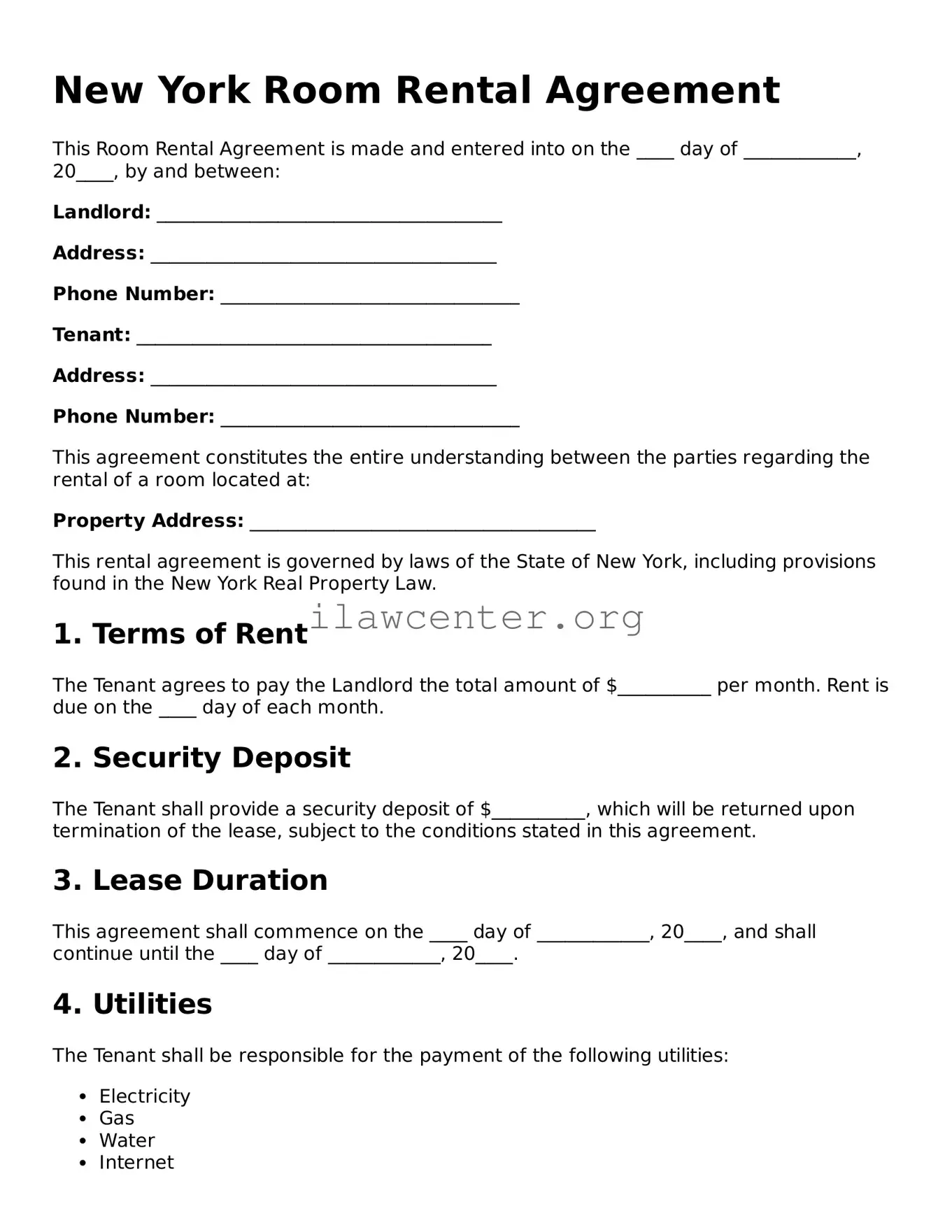Instructions on Utilizing New York Room Rental Agreement
Filling out the New York Room Rental Agreement form is an important step in your rental process. This agreement outlines the terms of the rental arrangement and protects the rights and responsibilities of both the landlord and the tenant. Follow these clear steps to complete the form accurately and effectively.
- Begin with the date at the top of the form. Write the current date when you are filling out the agreement.
- Next, provide the landlord's full name and contact information. This should include their address and phone number.
- Insert the tenant's full name and contact information as well. Make sure this matches the identity of the individual renting the room.
- Fill in the address of the rental property where the room is located. Include all relevant details such as unit number, if applicable.
- Specify the rental term. Indicate whether it’s a fixed-term lease or a month-to-month rental agreement.
- Provide the monthly rental amount. Ensure this is the agreed amount between both parties.
- Outline any security deposit specifics. Include the amount and any conditions regarding its return.
- Detail any utilities or services included in the rent. This may include internet, water, electricity, and other amenities.
- Both parties must sign and date the agreement at the bottom of the form. Include printed names for clarity.
Once you have accurately completed the form, review it carefully to ensure all information is correct. Keep a copy for your records, and provide another copy to the other party. This establishes clear communication and understanding regarding the rental arrangement moving forward.
